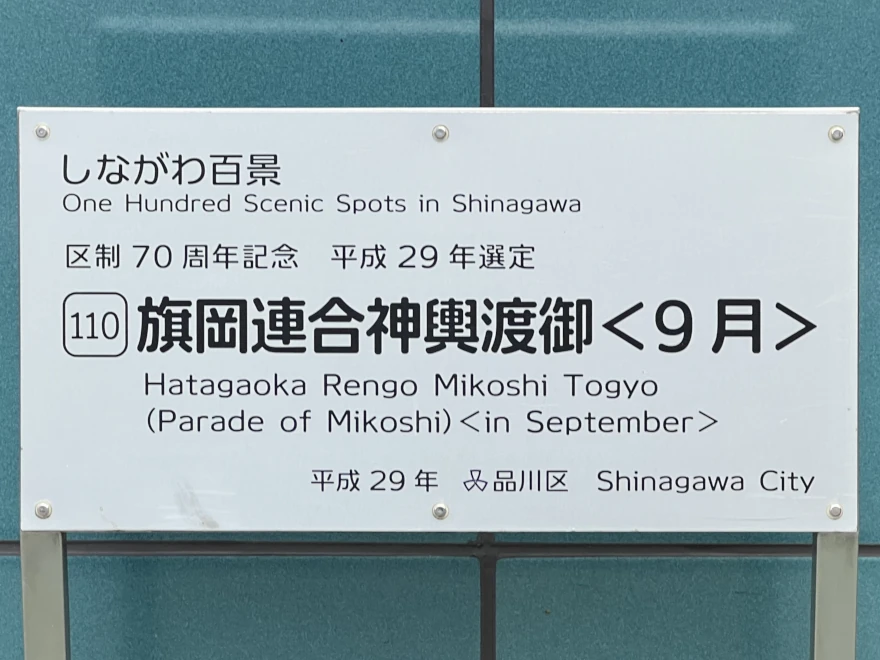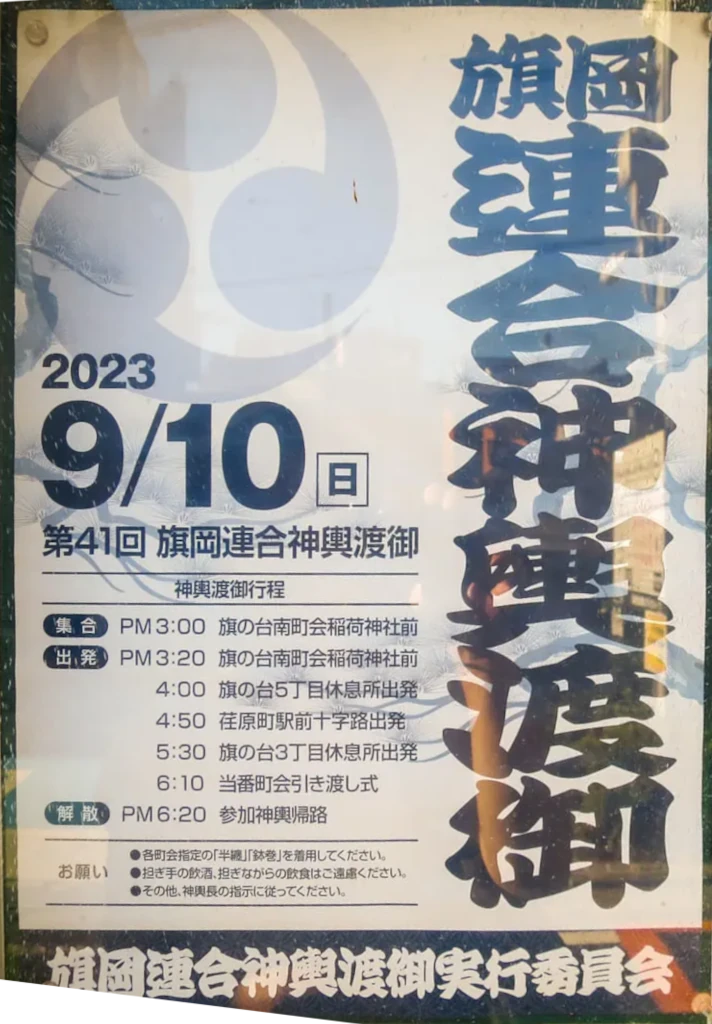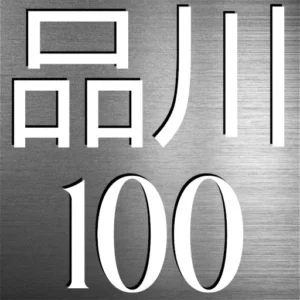🔥 Hatagaoka Rengo Mikoshi Procession – A Festival of Unity and Spirit
🧑🤝🧑 Eight Communities, One Spirit
The Hatagaoka Rengo Mikoshi Togyo (旗岡連合神輿渡御) is a major event held in early September. It brings together eight neighborhood associations in the Hatanodai and Nakanobu areas for a powerful show of unity. The event centers around the mikoshi (portable shrines), which are carried through the streets by teams of local residents and volunteers.
🏮 The Hatagaoka Rengo Mikoshi Procession Route
Coordinated by 旗岡連合神輿渡御実行委員会 (Hatagaoka Rengō Mikoshi Togyo Executive Committee). On festival Sunday, mikoshi teams from the following eight chōkai (町会) set out on a 3-hour procession through the the area:
- 荏原町一丁目町会 (Ebaramachi 1-chōme)
- 荏原町二丁目町会 (Ebaramachi 2-chōme)
- 荏原町三丁目町会 (Ebaramachi 3-chōme)
- 中延一丁目町会 (Nakanobu 1-chōme)
- 中延二丁目町会 (Nakanobu 2-chōme)
- 中延三丁目町会 (Nakanobu 3-chōme)
- 旗の台一丁目町会 (Hatanodai 1-chōme)
- 旗の台三丁目町会 (Hatanodai 3-chōme)
Each team brings their own decorated mikoshi. Residents take turns bearing the shrines, supported by chants, drums, and whistles. It’s a vibrant spectacle of movement, color, and local pride.
🎌 A Shrine at the Center
At the heart of the event is Hatagaoka Hachiman Shrine, the guardian shrine of the area. The festival weekend also includes ceremonies, stalls, performances, and taiko drumming. The shrine and local organizers plan and host the event with support from each neighborhood’s chōkai.
It’s not just a religious ritual—it’s a community affirmation. Generations gather to walk, cheer, carry, and remember the bonds that hold this part of Shinagawa together.
👘 Mikoshi Parade Clothing
Festival participants wear traditional attire designed for both unity and comfort. The main items are:
- Happi / Hanten (法被 / 半纏): Short, lightweight coats, usually decorated with the festival or neighborhood crest (紋, mon) on the back. For festivals, hanten and happi are nearly identical. The 2023 parade poster (see below) requests participants to wear their neighborhood-designated hanten.
- Hachimaki (鉢巻): A headband worn to absorb sweat and symbolize festival spirit and unity.
- Tabi (足袋): White split-toed socks. For outdoor use, participants may wear jika-tabi (tabi with rubber soles).
- Momohiki / Festival Trousers (股引 / 祭りズボン): Durable, fitted shorts or trousers, usually navy or white, for easy movement.
- Obi (帯): A sash used to tie the hanten or happi securely.
- Undershirt or Tank-top (肌着): For comfort underneath the jacket.
- Optional: Fundoshi (褌): Traditional loincloth, sometimes worn for historical authenticity, especially in summer.
Children can also participate in the parade by borrowing festival jackets (hanten) provided by the organizers, as noted in parade schedules and announcements.
🧭 Visitor Information
Address: 3-6-2 Hatanodai, Shinagawa-ku, Tokyo
Access: 2-minute walk from Ebaramachi Station (Tokyu Oimachi Line), 8-minute walk from Hatanodai Station (Tokyu Ikegami Line)
Best season: Early September (festival is held every two years)
Admission: Free to view
Official Info: Hataoka Hachiman Shrine
Note: Expect loud crowds, energetic mikoshi bearers, and temporary street closures around Nakanobu and Hatanodai.
Where is it?
| what3words | ///public.tougher.bicker |
| latitude longitude | 35.604594 ,139.701186 |
| Nearest station(s) | Hatanodai Station (Oimachi and Ikegami Lines) Ebaramachi Station (Oimachi Line) |
| Nearest public conveniences | Station and local konbini |
Show me a sign.

It’s on the side of Sangen Dori outside “Famille Hatanodai”, a Shinagawa Ward public housing facility (区民住宅) located in Hatanodai.
Withervee says…
I may have seen this, I may not have. In 2011 I saw a parade of Mikoshi on Nakanobu Skip Street. Some references say it takes place every two years on even numbered years. But 2011 is an odd numbered year. To be honest, I’m a little confused. Some years there are fewer that 8 town associations. However, I found this poster online which gives the route and puts the parade on a Sunday 10th of September in 2023, which is an odd numbered year.

| Time | Event / Action | Location (English) | Location (Japanese) |
|---|---|---|---|
| 3:00 PM | Assemble | In front of Hatanodai Minami Neighborhood Inari Shrine | 旗の台南町会稲荷神社前 |
| 3:20 PM | Departure | From Hatanodai Minami Neighborhood Inari Shrine | 旗の台南町会稲荷神社前 |
| 4:00 PM | Rest & Departure | From Hatanodai 5-chome Rest Area | 旗の台5丁目休憩所 |
| 4:50 PM | Departure | From Ebaramachi Station Front Intersection | 荏原町駅前十字路 |
| 5:30 PM | Rest & Departure | From Hatanodai 3-chome Rest Area | 旗の台3丁目休憩所 |
| 6:10 PM | Handover Ceremony | At the Duty Neighborhood Association | 当番町会 |
| 6:20 PM | Disband | Mikoshi Teams Return Home | 参加神輿帰路 |
I’ll try and get further information and update as necessary. Posters will appear in the neighbourhood advertising it.
Site (Event) Character
- Lifestyle 生活 (Seikatsu): ✔️
- Historical Significance 歴史 (Rekishi): ✔️
- Atmosphere/Natural Features 風土 (Fūdo): ✔️
Who in their right mind would vote for this?
- Shinto devotees
- Festival-goers
- Local residents
- Photographers
- Culture lovers
Further reading
While you’re there…
To get away from the clamour in Hatanodai: have a look at Kanariya slope or Hatanodai Fushimi Inari Shrine while you’re in the neighborhood.
Previous
109: Bunko no Mori

